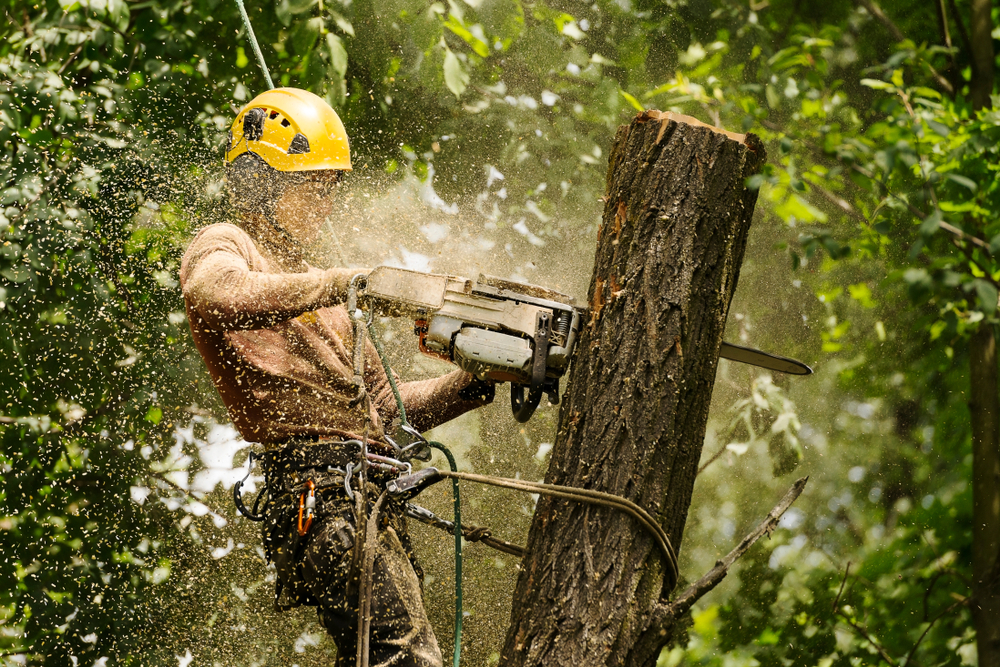Navigating the Tree Removal Permit Process in Richmond, VA
Trees contribute significantly to the aesthetic appeal, environmental health, and overall quality of life in urban areas like Richmond, VA. However, the removal of trees, whether due to safety concerns, development projects, or landscaping needs, is subject to local regulations. Understanding and adhering to these regulations are vital for property owners. This article aims to provide a comprehensive guide to navigating the tree removal permit process in Richmond, VA, emphasizing the importance of compliance with local laws and regulations.
Why do you need a permit for tree removal?
Tree removal permits are required to ensure that the process is conducted in a manner that preserves the ecological balance, safeguards public safety, and maintains the aesthetic integrity of the community. These permits are essential because:
Local regulations mandate the need for permits based on factors such as tree species, size, location, and the property’s zoning designation. These regulations aim to protect valuable green spaces, wildlife habitats, and the overall urban canopy.
Safety concerns associated with tree removal, especially in densely populated areas, necessitate oversight by local authorities. Permit requirements help ensure that trees are removed safely, minimizing risks to property and human life.
Failure to obtain a permit before removing trees can result in penalties, including fines and legal action. Property owners must understand and comply with permit requirements to avoid potential liabilities.

Steps to obtaining a tree removal permit
Navigating the tree removal permit process involves several steps:
- Identify if you need a permit: Determine whether your property falls under regulations that require a permit for tree removal. Review local ordinances or consult with the city’s planning or forestry department to ascertain permit requirements.
- Contacting the appropriate authorities: Reach out to the relevant department responsible for issuing tree removal permits. This may involve contacting the city’s planning department, forestry division, or urban forestry commission.
- Gathering necessary documentation: Prepare all required documents, such as property surveys, tree assessments, and site plans. These documents provide essential information about the trees to be removed, including their species, size, condition, and location.
- Submitting the application: Complete the permit application form accurately and provide all necessary documentation. Pay any application fees as required by the city. Submit the application to the designated authority for review.
- Timeline for approval process: Understand that the approval process may vary depending on factors such as the complexity of the application and the workload of the reviewing authority. Be prepared for potential delays and follow up with the authorities as needed to expedite the process.
Common reasons for tree removal permits being denied
Several factors can lead to the denial of tree removal permits:
- Protected species: Trees classified as protected species may require special permits or mitigation measures for removal. These species are often deemed ecologically or culturally significant and are subject to stringent regulations to ensure their preservation.
- Historic or significant trees: Trees with historical, cultural, or ecological significance may be protected by local ordinances. Removal of such trees without proper authorization can result in fines, penalties, or legal action.
- Violation of property boundaries: Property owners must obtain permission from neighboring property owners before removing trees that straddle property lines. Failure to do so can lead to disputes and legal complications, resulting in permit denials.
- Insufficient documentation: Incomplete or inaccurate documentation can lead to permit denials. Property owners must ensure that all required information is provided and supported by evidence to facilitate the review process.
Tips for a successful permit application
To increase the likelihood of a successful permit application, property owners should consider the following tips:
- Plan ahead: Start the permit application process well in advance to allow for sufficient time for review and approval. Consider factors such as seasonal workload fluctuations and potential project delays.
- Provide accurate information: Ensure that all information provided in the application is accurate, up-to-date, and consistent with supporting documentation. Any discrepancies or inaccuracies can lead to delays or denials.
- Consider alternative options: Explore alternative solutions to tree removal, such as pruning, transplanting, or tree preservation measures, where feasible. This can help minimize the need for permits and preserve valuable greenery.
- Hire a professional arborist: Seek the assistance of a qualified arborist to assess the condition of trees, recommend appropriate courses of action, and assist with preparing documentation. Arborists can also provide valuable expertise and guidance throughout the permit application process.
Cost of a tree removal permit
The cost of obtaining a tree removal permit may include:
- Application fees: Tree removal permit applications typically incur a fee, which varies depending on the jurisdiction and the scope of work involved. These fees help cover administrative costs associated with processing permit applications and conducting site inspections.
- Additional expenses: In addition to application fees, property owners may incur additional expenses such as hiring an arborist, conducting tree assessments, and obtaining necessary permits and approvals from other agencies or stakeholders.
- Factors that may affect the cost: The total cost of obtaining a tree removal permit can vary depending on factors such as the size and number of trees to be removed, the complexity of the project, and any special requirements imposed by local regulations or conditions at the site.

Potential consequences for removing a tree without a permit
Removing trees without proper authorization can have serious consequences:
- Legal implications: Unauthorized tree removal may violate local ordinances and regulations, resulting in fines, penalties, or legal action by the city or affected parties. Property owners may be subject to civil or criminal liabilities for non-compliance with permit requirements.
- Environmental impact: Unauthorized tree removal can have detrimental effects on the environment, including loss of habitat for wildlife, disruption of ecosystem functions, and degradation of air and water quality. Preservation of trees is essential for maintaining ecological balance and environmental sustainability.
- Damage to property: Improper tree removal techniques or unplanned tree removal can result in damage to neighboring properties, structures, utilities, or underground infrastructure. Property owners may be held liable for any damages caused by unauthorized tree removal activities.
- Cost of fines and penalties: Property owners who remove trees without permits may be subject to fines, penalties, or enforcement actions imposed by local authorities. These costs can far exceed the expenses associated with obtaining a permit and may result in financial hardship or legal consequences for property owners.
Conclusion
Navigating the tree removal permit process in Richmond, VA requires careful planning, adherence to regulations, and consideration of environmental and safety concerns. By understanding the importance of obtaining permits and following the prescribed procedures, property owners can avoid legal complications, safeguard the environment, and contribute to the sustainable management of urban trees. Seeking professional assistance from arborists and other experts can facilitate the permit application process and ensure compliance with applicable laws and regulations. Remember, responsible tree removal practices are essential for preserving the beauty, health, and vitality of our communities for future generations.
Tree Trimming Richmond
(804) 533-3943
https://treetrimmingrichmond.com/



